HUNT FOR OSAMA BIN LADEN

FBI digitalized Osama picture After September 11, 2001 attack on the World Trade Center President George W. Bush famously said he wanted Osama bin Laden "dead or alive." In another speech, Bush said, “If he thinks he can hide and run from the United States and our allies, he will be sorely mistaken.” However, Jane Mayer wrote in The New Yorker “as months went by without a successful capture—“point” targets, as individuals are called by military tacticians, are notoriously elusive — Bush rarely mentioned bin Laden’s name in public. The Administration’s attention shifted to building support for the war in Iraq, and Saddam Hussein seemed to replace bin Laden in the role of the world’s most notorious “evildoer.”
The dragnet — perhaps the largest in history for a single individual — cost billions of dollars and brought 100,000 troops to Afghanistan. The hunt to find bin Laden began under the Clinton Administration and was continued by the Bush and Obama administrations. Before September 11th the CIA employed 15 Afghan agents whose duty was keeping an eye on Osama bin Laden. About once a month they were able to locate Osama bin Laden in a specific place but nothing ever came of it. To American spies and soldiers the leaders of Al-Qaida were high-value targets with Osama bin Laden and his No. 2 Ayman al-Zawahiri referred to as one and two HVT 1 and HVT 2.
A $25 million bounty was placed on Osama bin Laden’s head. In February 2005, a large advertising campaign was mounted for leads leading to the capture of bin Laden and other Al-Qaida and Taliban leaders. A 30-second television spot showed photographs of Osama bin Laden, al-Zawahiri and Taliban leader Mullah Omar with a plea for held to bring them to justice. Radio messages were broadcasts in Urdu, Sindhi, Baluchi and Pashtu with telephone numbers, e-mail addressees and promises of resettlement for informants. Osama bin Laden told confidants that he “would welcome death as a martyr” and he never would allow himself to be captured alive. He told a Pakistani journalist shortly after the US invasion of Afghanistan: "America can't get me alive... I can be eliminated, but not my mission." In July 2007 the bounty was doubled by the U.S. State Department and U.S. Congress to $50 million.
Newsweek called the search a “frustrating, at times agonizing, tale of missed opportunities, damned-if-you-do, damned-if-you-don't choices, and outright blunders.” At least one free-lancer took part in he hunt for bin Laden. Gary Faulkner of Greely, Colorado was detained in northern Pakistan with a pistol, night-vision equipment and sword, which he said he planned to use to kill bin Laden. He was released after about a week and told he had go back to the United States.
Paul Haven of AP wrote: At several points in the years since the September 11 attacks, bin Laden's capture or death had appeared imminent. After the March 2003 arrest of Khalid Shaikh Mohammed, the alleged mastermind of the Sept. 11 attacks, officials in Islamabad and Washington were paraded out to deny a consistent stream of rumours that bin Laden had been captured. US forces poured into the border region looking for him and former Taliban and Taliban in hiding said bin Laden had constantly been on the move, travelling through the mountains with a small entourage of security. Through it all, bin Laden vowed repeatedly that he was willing to die in his fight to drive the Israelis from Jerusalem and Americans from Saudi Arabia and Iraq. [Source: Paul Haven, AP, May 2, 2011]
Book: “Manhunt: The Ten-Year Search for Bin Laden — from 9/11 to Abbottabad” by Peter L. Bergen (Crown, 2012); Film: Zero Dark Thirty (2012) Oscar-winner Kathryn Bigelow's chronicle hunt for Osama bin Laden
See Separate Articles OSAMA BIN LADEN IN ABBOTTABAD AFTER SEPTEMBER 11TH factsanddetails.com; DEATH OF OSAMA BIN LADEN factsanddetails.com
Hunt for Osama bin Laden Begins After September 11th
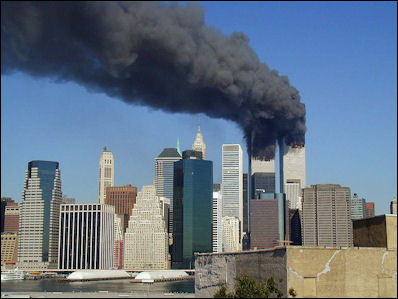
Before 9/11, Newsweek reported, “the hunt for bin Laden was marked by a certain tentativeness, an official reluctance to suck America into the dirty business of political assassination or to get U.S. troops killed. Within days after 9/11, President Bush was vowing to capture bin Laden "dead or alive" and Cofer Black, the CIA's counterterror chief at the time, was ordering his troops to bring back bin Laden's head "in a box." (In fact, CIA operatives in Afghanistan requested a box and dry ice, just in case.) With old-fashioned derring-do, CIA case officers, carrying millions of dollars, choppered into Afghanistan to work with tribesmen to drive out Al Qaeda and its Taliban hosts. The CIA's alacrity caused some heartburn at the Pentagon. According to Bob Woodward's "Bush at War," Defense Secretary Donald Rumsfeld steamed impatiently while the military seemed to dither, stymied by weather and fussing with complex backup and rescue arrangements before the brass would commit any troops. [Source: Newsweek, Reported by Ron Moreau and Sami Yousafzai on the Afghanistan-Pakistan border; Zahid Hussain in Islamabad; Rod Nordland in Tora Bora; Mark Hosenball, Michael Hirsh, Michael Isikoff, John Barry, Dan Ephron and Eve Conant in Washington; Christopher Dickey in Paris, and Roya Wolverson in New York. Written by Evan Thomas. September 3, 2007]
“Rumsfeld's foot-stamping was rewarded. By mid-October, CIA case officers and Army, Navy, and Air Force Special Operations units were working together in unusual harmony, using high-tech air support and, at one point, mounting what Rumsfeld gleefully called "the first cavalry charge of the 21st century" to kill, capture or chase away thousands of jihadists. The Taliban fled for the hills. Bin Laden, it seemed, would be cornered. Indeed, on Dec. 15, CIA operatives listening on a captured jihadist radio could hear bin Laden himself say "Forgive me" to his followers, pinned down in their mountain caves near Tora Bora.”
“As it happened, however, the hunt for bin Laden was unraveling on the very same day. As recalled by Gary Berntsen, the CIA officer in charge of the covert team working with the Northern Alliance, code-named Jawbreaker, the military refused his pleas for 800 Army Rangers to cut off bin Laden's escape. Maj. Gen. Dell Dailey, the Special Ops commander sent out by Central Command, told Berntsen he was doing an "excellent job," but that putting in ground troops might offend America's Afghan allies. "I don't give a damn about offending our allies!" Berntsen yelled, according to his 2005 book, "Jawbreaker." "I only care about eliminating Al Qaeda and delivering bin Laden's head in a box!" (Dailey, now the State Department's counterterror chief, told NEWSWEEK that he did not want to discuss the incident, except to say that Berntsen's story is "unsubstantiated.") Berntsen went to Crumpton, his boss at the CIA, who described to NEWSWEEK his frantic efforts to appeal to higher authority. Crumpton called CENTCOM's commander, Gen. Tommy Franks. It would take "weeks" to mobilize a force, Franks responded, and the harsh, snowy terrain was too difficult and the odds of getting bin Laden not worth the risk. Frustrated, Crumpton went to the White House and rolled out maps of the Pakistani-Afghan border on a small conference table. President Bush wanted to know if the Pakistanis could sweep up Al Qaeda on the other side. "No, sir," Crumpton responded. (Vice President Dick Cheney did not say a word, Crumpton recalled.) The meeting was inconclusive. Franks, who declined to comment, has written in his memoirs that he decided, along with Rumsfeld, that to send troops into the mountains would risk repeating the mistake of the Soviets, who were trapped and routed by jihadist guerrilla fighters in the 1980s (helped out, it should be recalled, with Stinger missiles provided by the CIA).
To catch bin Laden, the CIA was left to lean on local tribesmen, a slender reed. NEWSWEEK recently interviewed two of the three tribal chiefs involved in the operation, Hajji Zahir and Hajji Zaman. They claimed that the CIA overly relied on the third chieftain, Hazrat Ali?and that Ali was paid off (to the tune of $6 million) by Al Qaeda to let bin Laden slip away. Ali could not be reached for comment. But Crumpton, who admits that he has no hard evidence, told NEWSWEEK he is "confident" that a payoff allowed Al Qaeda to escape. Unsure which side would win, some tribesmen apparently hedged by taking money from both sides.
Legal Action and Early Efforts to Kill Osama bin Laden
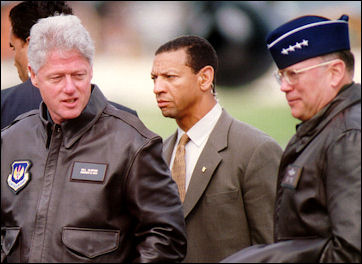
In 1998, U.S. President Bill Clinton signed a “lethal finding,” a way of skirting the 1976 ban on political assassinations which held the U.S. security service blameless if Osama bin Laden was killed in a covert operation. During Clinton administration the CIA hatched a plan to capture or kill Osama bin Laden in Afghanistan. Special Forced rehearsed the capture but the plan was aborted in 1997 due to “foot dragging” by Pakistani intelligence services and the difficulty of the mission. Before September 11th the CIA trained an Pakistani intelligence (ISI) team to go into Afghanistan and snatch Osama bin Laden but nothing came of it, in part because it is believed that ISI higher ups wished it so.
After the Africa bombings in 1998 American warships fired seventy-nine Tomahawk cruise missiles into Afghanistan and Sudan. In Afghanistan, the attack failed to hit its main targets — bin Laden, Zawahiri, and the other Al Qaeda leaders. After the Africa attacks a $5 million award was offered by the U.S. government for information leading to capture or arrest of Osama bin Laden. This figure was raised to $25 million during the Afghanistan campaign. The ability of bin Laden to avoid being killed by the world’s only superpower gave him a reputation of invincibility and added to his legend and drew more supporters to his cause.
In August 1996, in New York City, a federal grand jury began meeting to consider charges against Bin Laden. Disputes arose among prosecutors and American law enforcement and intelligence officers about which attacks against American interests could truly be attributed to Bin Laden — whether in fact he had, as an indictment eventually charged, trained and paid the men who killed Americans in Somalia. In June 1997, the grand jury that had been convened two years earlier issued its indictment, charging Bin Laden with 1) conspiracy to attack the United States abroad, 2) heading a terrorist organization (Al Qaeda) and for financing terrorist activities around the world. In January 1999, the United States government issued a superseding indictment that affirmed the power Bin Laden had sought all along, declaring Al Qaeda an international terrorist organization in a conspiracy to kill American citizens.[Source: Lawrence Wright, The New Yorker, September 16, 2002]
Osama bin Laden in Pakistan

Where it was initially thought
Osama bin Laden might be In September 2004, Pakistan’s President Gen. Pervez Musharraf said intelligence reports suggested that Osama bin Laden was alive. The intelligence included information gleaned from interrogations and human intelligence. In December 2004, Musharraf said the search for Osama bin Laden had grown cold. He admitted that his intelligence services had no idea where he was and had ideo how they could get wind of his whereabouts. Newsweek reported CIA analysts began calling bin Laden "Elvis" because he was here, there, but really nowhere.
Newsweek reported in 2007: “Bin Laden was not so much seeking refuge as coming home when he disappeared into the jagged peaks along the frontier of northwest Pakistan. He had always liked hunting and horseback riding in the mountains... Though a wealthy Saudi, bin Laden had long since learned to live close to the ground, abjuring his followers to learn to survive without modern comforts like plumbing or air conditioning. [Source: Newsweek, Reported by Ron Moreau and Sami Yousafzai on the Afghanistan-Pakistan border; Zahid Hussain in Islamabad; Rod Nordland in Tora Bora; Mark Hosenball, Michael Hirsh, Michael Isikoff, John Barry, Dan Ephron and Eve Conant in Washington; Christopher Dickey in Paris, and Roya Wolverson in New York. Written by Evan Thomas. September 3, 2007]
“Local Pashtun tribesmen were not about to turn bin Laden in for a reward, even a $25 million one. The strictly observed custom of defending guests, part of an ancient honor code called Pashtunwali, insulated Al Qaeda. The Pakistan central government could do little to crack this social system. The wilds of the Federally Administered Tribal Area (FATA) have been virtually ungovernable for centuries. The British Raj failed, and the Pakistan government never tried very hard, leaving administration up to federally appointed tribal agents and law enforcement in the hands of a local constabulary of dubious loyalty. In the 1980s, during the insurrection against Soviet rule in Afghanistan, the tribal agencies were a kind of staging area for jihadists like bin Laden. Saudi money built hundreds of madrassas — fundamentalist schools that radicalized local youth — and Pakistani intelligence (the ISI) formed alliances with the jihadists to subvert the Soviet-backed Afghan regime.
“In Pakistan, President Musharraf was wary of his American allies in the War on Terror. In 2002, he told a high-ranking British official: "My great concern is that one day the United States is going to desert me. They always desert their friends." According to this official, who declined to be identified sharing a confidence, Musharraf cited the U.S. pullouts from Vietnam in the 1970s, Lebanon in the 1980s and Somalia in the 1990s. Still, he quickly gave the Americans considerable leeway to operate inside Pakistan. Musharraf told the Americans he understood that they would do what they had to do to attack high-value targets, although he indicated the Pakistanis might have to issue pro forma denunciations. His one request, said a U.S. official who dealt directly with the Pakistani leader, was that bin Laden not be captured alive and be brought to trial in Pakistan.
Hunting for Osama bin Laden in Pakistan
Tens of thousands of Pakistani troops and 17,000 U.S. personnel were employed at various times in the hunt for Osama bin Laden. No one seriously tried to claim the bounty on Osama bin Laden’s head even after it was doubled to $50 million in July 2007. I was unclear why nobody claimed the $25 million reward, which was made known on. radio announcements, posters and matchbook advertisement.
After Khalid Shailkh Mohammed was captured in March 2002, the United States and its allies intensified searches for Osama bin Laden in the border region of Pakistan and Afghanistan based on information provided by Mohammed. They concentrated on an area in southwestern Baluchistan province of Pakistan between Quetta and the Iranian border and the Northwest Frontier Province near Balikot, 190 kilometers northwest of Islamabad. Mohammed may have met with Osama bin Laden in Rawalpindi a month before he captured. As of April 2003, 38 U.S. Special Forces members had died and 137 were wounded in the effort to catch Osama bin Laden.
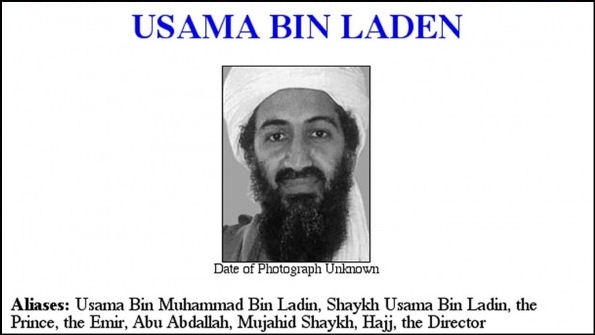
The CIA didn’t have much success setting operations in the tribal areas. A former CIA operative told Atlantic Monthly, “The CIA probably doesn’t have a single truly qualified Arabic-speaking officer of Middle Eastern background who can play a believable Muslim fundamentalist who would volunteer to spend yeas of his life with shitty food and no women in the mountains of Afghanistan.”
Finding Osama bin Laden in Pakistan was difficult in part because Pakistani intelligence and security forces were not as cooperative as they could have been. One Pakistani general who insisted that bin Laden was probably not even in Pakistan, told Reuters: Osama bin “requires his own protection and the kind of security apparatus he is supposed to have around would give us a very big signature. There is not an niche of South Wazristan agency or the tribal area which we have not swept time and again and if he was here, I assure you he could not have escaped my ears and eyes.”
It has been suggested that ISI knows where Osama bin Laden is but does not want to disclose the information because if it did the United States could close up shop and pull its money out of Pakistan as it did after the Soviets left Afghanistan. When asked about efforts by ISI officials to find bin Laden, Shaheen Sehbai, a Pakistani journalist who used to edit the News, the largest English-language newspaper in Pakistan, told The New Yorker: “I question how hard they’re trying. I think they’re not looking very hard, because he’ll always remain a bargaining chip.” [Source: Jane Mayer, The New Yorker, July 28, 2003]
Near Miss in Baluchistan in 2003
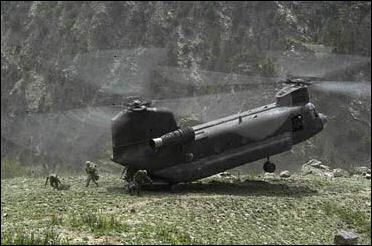
After the capture of Khalid Shaikh Mohammed in Rawalpindi, Pakistan in March 2003, authorities in Pakistan obtained Mohammed’s laptop computer and satellite phone. Jane Mayer wrote in The New Yorker: “This breakthrough, they hoped, would help them track down the organization’s leader, Osama bin Laden. Analysts in Washington speculated that news of Mohammed’s capture might even prompt bin Laden into fleeing his current hideout. According to an F.B.I. official, in the weeks before his arrest Mohammed had been moving from one place to another in Baluchistan, a lawless province that borders Afghanistan and Iran. Bin Laden, it was thought, was probably in the same area.” [Source: Jane Mayer, The New Yorker July 28, 2003]
“Days later, American intelligence satellites traced a telephone call made to Baluchistan by Saad bin Laden, one of Osama’s sons, who was thought to be hiding in Iran. Intelligence officials knew that bin Laden no longer dared to answer the phone, but they believed the call might have been placed to one of his aides. An unmanned spy plane dispatched to the region spotted a suspicious convoy moving at night. It consisted of about a hundred people on horseback and on foot, and was advancing along an ancient smugglers’ route, in a rocky desert area. Bin Laden, the officials hoped, might be travelling with this group.”
“A team made up of C.I.A. paramilitary operatives, Delta Force soldiers, and Pakistani officials descended upon the convoy. Meanwhile, in Washington, the C.I.A. had orders to launch a Hellfire missile from an unmanned Predator intelligence aircraft if the presence of bin Laden could be confirmed. After the terrorist attacks of September 11, 2001, President Bush signed a top-secret Memorandum of Notification, calling for bin Laden to be either captured or killed on sight.
“The C.I.A. was very confident — they thought they had him there in Baluchistan, across from the Iranian border,” Vincent Cannistraro, a former chief of operations for the C.I.A.”s Counter-Terrorism Center, told The New Yorker. “They had a fixed location on him. They mounted a moderate-sized operation.” The convoy was intercepted, Cannistraro said. Each traveller was examined. “Lo and behold, bin Laden wasn’t there,” he said. The convoy was merely a group of refugees.
“Instead of firing a Hellfire missile,: Mayer wrote, “American aircraft dropped flyers that featured an image of bin Laden’s face behind bars. The flyers also publicized a twenty-five-million-dollar reward that would be given to anyone who could hand bin Laden over to the authorities. Iranian officials issued a statement denying that bin Laden’s son was in their country. (Iran has maintained this position, despite numerous reports to the contrary.) American officials declined to acknowledge the incident at all. Cofer Black, a veteran of the C.I.A. whom President Bush appointed as the State Department’s coördinator for counter-terrorism. If bin Laden was killed, Black continued, the world would demand proof. “You’d need some DNA,” he said. “There’s a good way to do it. Take a machete, and whack off his head, and you’ll get a bucketful of DNA, so you can see it and test it. It beats lugging the whole body back!”
American Soldiers Almost Stumble on Osama bin Laden in 2004
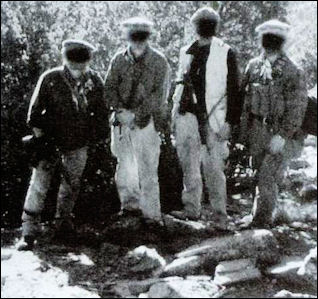
In 2007 Newsweek reported: “The Americans were getting close. It was early in the winter of 2004-05, and Osama bin Laden and his entourage were holed up in a mountain hideaway along the Afghanistan-Pakistan border. Suddenly, a sentry, posted several kilometers away, spotted a patrol of U.S. soldiers who seemed to be heading straight for bin Laden's redoubt. The sentry radioed an alert, and word quickly passed among the Qaeda leader's 40-odd bodyguards to prepare to remove "the Sheik," as bin Laden is known to his followers, to a fallback position. [Source: Newsweek, Reported by Ron Moreau and Sami Yousafzai on the Afghanistan-Pakistan border; Zahid Hussain in Islamabad; Rod Nordland in Tora Bora; Mark Hosenball, Michael Hirsh, Michael Isikoff, John Barry, Dan Ephron and Eve Conant in Washington; Christopher Dickey in Paris, and Roya Wolverson in New York. Written by Evan Thomas. September 3, 2007]
As Sheik Said, a senior Egyptian Qaeda operative, later told the story, the anxiety level was so high that the bodyguards were close to using the code word to kill bin Laden and commit suicide. According to Said, bin Laden had decreed that he would never be captured. "If there's a 99 percent risk of the Sheik's being captured, he told his men that they should all die and martyr him as well," Said told Omar Farooqi, a Taliban liaison officer to Al Qaeda who spoke to a Newsweek reporter.
The secret word was never given. As the Qaeda sentry watched the U.S. troops, the patrol started moving in a different direction. Bin Laden's men later concluded that the soldiers had nearly stumbled on their hideout by accident. (One former U.S. intelligence officer told NEWSWEEK that he was aware of official reporting on this incident.)
American intelligence officials interviewed by Newsweek ruefully agree that the hunt to find bin Laden has been more a game of chance than good or "actionable" intelligence. Since bin Laden slipped away from Tora Bora in December 2001, U.S. intelligence has never had better than a 50-50 certainty about his whereabouts. "There hasn't been a serious lead on Osama bin Laden since early 2002," says Bruce Riedel in 2007, a South Asia expert at the CIA. "What we're doing now is shooting in the dark in outer space. The chances of hitting anything are zero."
Aborted Mission to Catch Osama bin Laden Pakistan in 2005
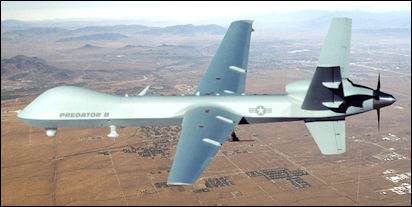
A secret 2005 mission to capture senior al-Qaeda members in Pakistan's tribal areas was aborted at the last moment when Bush administration officials decided it was too risky and could jeopardize relations with Pakistan, The New York Times reported. Citing intelligence and military officials, including a former senior intelligence official involved in the planning, the Times said in a story posted on its Web site that the target was a meeting of al Qaeda leaders. That conference was thought by intelligence officials to have included Ayman al-Zawahri, Osama bin Laden's top deputy, who was believed to run the group's operations, it said.
[Source: Reuters, July 7, 2007]
The classified mission was scotched even as Navy Seals in parachute gear had boarded C-130 cargo planes in Afghanistan after then-Defense Secretary Donald Rumsfeld rejected a last-minute appeal by then-CIA director Porter Goss, the Times said, citing the officials and the former intelligence official, all of whom requested anonymity. Rumsfeld felt the mission, which grew from a small number of personnel to several hundred, would risk too many U.S. lives, and was also concerned about possible repercussions on U.S.-Pakistan relations, the Times said.
But that decision also frustrated some top intelligence officials and members of the military's secret Special Operations units. Some said the United States missed a significant opportunity to possibly nab senior al Qaeda members, the newspaper reported. Another concern was his determination that the United States could not carry out the mission without Pakistani President General Pervez Musharraf's permission, which was unlikely given its size and scope, the officials said. The former intelligence official involved in the mission's planning said it grew to the point where "the whole thing turned into the invasion of Pakistan," which he nonetheless felt was still worth the risk."We wanted to take a shot," the official added. Several former officials said it was not the only time since the September 11 attacks that plans were developed for a large U.S. military force in Pakistan, the Times said. The newspaper said it was not clear whether President George W. Bush was informed about the planned operation.
Abbottabad
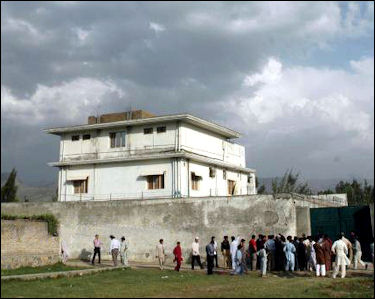
Osama_bin_Laden_compound It turned out that Osama bin Laden was in the Pakistani hill station town of Abbottabad. The compound was five kilometers from Pakistan’s equivalent of West Point and 60 kilometers north of Islamabad, Pakistan’s capital. AP reported: “Like many Pakistani towns where the army has a strong presence, Abbottabad is well-manicured, and has solid infrastructure. Street signs tell residents to "Love Pakistan." The city also is known for its good schools, including some that were originally established by Christian missionaries.”
Steve Coll wrote in The New Yorker: Abbottabad is essentially a military-cantonment city in Pakistan, in the hills to the north of the capital of Islamabad, in an area where much of the land is controlled or owned by the Pakistani Army and retired Army officers. Although the city is technically in what used to be called the Northwest Frontier Province, it lies on the far eastern side of the province and is as close to Pakistani-held Kashmir as it is to the border city of Peshawar. The city is most notable for housing the Pakistan Military Academy, the Pakistani Army’s premier training college, equivalent to West Point. Looking at maps and satellite photos on the Web last night, I saw the wide expanse of the Academy not far from where the million-dollar, heavily secured mansion where bin Laden lived was constructed in 2005. The maps I looked at had sections of land nearby marked off as “restricted areas,” indicating that they were under military control. It stretches credulity to think that a mansion of that scale could have been built and occupied by bin Laden for six years without its coming to the attention of anyone in the Pakistani Army. [Source: Steve Coll, The New Yorker May 2, 2011]
Abbottabad is also a transit point for militants moving between Kashmir and the tribal areas. The region is the prime recruitment base of militant groups such as Harakat-ul-Mujahedeen, whose training camps and other facilities still exist nearby in Mansehra. At least two other top al-Qaida leaders were sheltered in Abbottabad. Al-Qaida's No. 3, Abu Faraj al-Libi, lived in the town before his arrest in 2005 elsewhere in northwest Pakistan, according to U.S. and Pakistani officials. Earlier this year, Indonesian terror suspect Umar Patek was nabbed at a house in the town following the arrest of an al-Qaida courier who worked at the post office. It is not clear whether Patek had any links with bin Laden. [Source: Carlotta Gall, Pir Zubair Shah and Eric Schmitt, New York Times, June 23, 2011]
Strategy to Finding Osama bin Laden
Dina Temple-Raston wrote in the Washington Post: In 2005, a CIA analyst named Rebecca (a pseudonym) wrote a memo laying out a new strategy for the hunt for Osama bin Laden. Given the absence of any real leads, she asked, how could you plausibly find him? She sketched out what she saw as four pillars on which the search needed to be built. Her solution turned out to be prophetic. “The first pillar was locating al-Qaeda’s leader through his courier network,” Peter L. Bergen writes in his new book, “Manhunt.” “The second was locating him through family members, either those who might be with him or anyone in his family who might try to get in touch with them. The third was communications. . . . The final pillar was tracking bin Laden’s occasional outreach to the media.” [Source: Dina Temple-Raston, Washington Post, May 4, 2011]
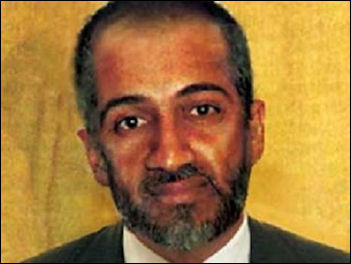
Eugene Robinson wrote in the Washington Post: “According to widespread reports, the first important clue in the long chain leading to bin Laden’s lair came in 2004 from a Pakistani-born detainee named Hassan Ghul, who was held in one of the CIA’s secret “black site” prisons and subjected to coercive interrogation. Ghul was not waterboarded but may have been offered other items on the menu, including sleep deprivation, exposure to extreme temperatures and being placed in painful “stress positions” for hours at a time. [Source: Eugene Robinson, Washington Post , May 5, 2011]
Ghul reportedly disclosed the nom de guerre of an al-Qaeda courier — Abu Ahmed al-Kuwaiti — who appeared to have access to the terrorist organization’s inner circle. The CIA was able to deduce that Ghul was referring to a man they had heard of before, a trusted aide who might know where bin Laden was hiding.
Two of the highest-ranking al-Qaeda leaders who were taken into U.S. custody — operations chief Khalid Sheikh Mohammed, who was waterboarded repeatedly, and Abu Faraj al-Libi, who was not waterboarded but was subjected to other harsh interrogation techniques — pointedly declined to talk about al-Kuwaiti. Ghul, however, described al-Kuwaiti as a close associate and protege of both Mohammed and al-Libi. CIA analysts believed they might be on the right track.
It was, of course, just one of many tracks that might have led to bin Laden. This and other trails went hot and cold until last summer, when al-Kuwaiti made a phone call to someone being monitored by U.S. intelligence, who then watched his movements until he led them in August to the compound in Abbottabad, Pakistan, where bin Laden was cornered and killed.
Getting Information About Osama bin Laden’s Courier
Officials had long believed that bin Laden was hiding a mountainous region along the Pakistan-Afghanistan border. In August 2010, U.S. intelligence officials got a tip on his whereabouts in Abbottabad. By mid-February, information developed that made U.S. officials confident that the information was sound. [Source: Reuters, MSNBC.com, May 2, 2011]
Adam Goldman and Matt Apuzzo wrote in Associated Press: “Inside the CIA team hunting bin Laden, it always was clear that bin Laden's vulnerability was his couriers. He was too smart to let al-Qaida foot soldiers, or even his senior commanders, know his hideout. But if he wanted to get his messages out, somebody had to carry them, someone bin Laden trusted with his life. Shortly after the Sept. 11, 2001, terrorist attacks, detainees in the CIA's secret prison network told interrogators about Abu Ahmed al-Kuwaiti who was close to bin Laden. After the CIA captured al-Qaida's No. 3 leader, Khalid Sheikh Mohammed, he confirmed knowing al-Kuwaiti but denied he had anything to do with al-Qaida. [Source: Adam Goldman and Matt Apuzzo, Associated Press, May 3, 2011]
“Then in 2004, top al-Qaida operative Hassan Ghul was captured in Iraq. Ghul told the CIA that al-Kuwaiti was a courier, someone crucial to the terrorist organization. In particular, Ghul said, the courier was close to Faraj al-Libi, who replaced Mohammed as al-Qaida's operational commander. It was a key break in the hunt for in bin Laden's personal courier. "Hassan Ghul was the linchpin," a U.S. official said.
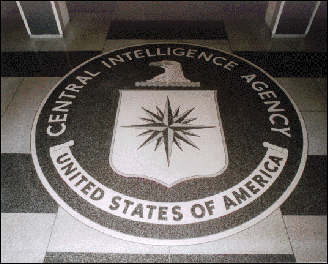
Finally, in May 2005, al-Libi was captured. Under CIA interrogation, al-Libi admitted that when he was promoted to succeed Mohammed, he received the word through a courier. But he made up a name for the courier and denied knowing al-Kuwaiti, a denial that was so adamant and unbelievable that the CIA took it as confirmation that he and Mohammed were protecting the courier. It only reinforced the idea that al-Kuwaiti was very important to al-Qaida. If they could find the man known as al-Kuwaiti, they'd find bin Laden.
The revelation that intelligence gleaned from the CIA's so-called black sites helped kill bin Laden was seen as vindication for many intelligence officials who have been repeatedly investigated and criticized for their involvement in a program that involved the harshest interrogation methods in U.S. history. "We got beat up for it, but those efforts led to this great day," said Marty Martin, a retired CIA officer who for years led the hunt for bin Laden. Mohammed did not discuss al-Kuwaiti while being subjected to the simulated drowning technique known as waterboarding, former officials said. He acknowledged knowing him many months later under standard interrogation, they said, leaving it once again up for debate as to whether the harsh technique was a valuable tool or an unnecessarily violent tactic.
Identifying and Locating Osama bin Laden’s Courier
Ken Dilanian wrote in the Los Angeles Times: “A key break came in 2007, when the CIA learned the courier's real name. U.S. officials do not dispute published reports indicating that NSA intercepts of phone conversations among his family members played a role. By early 2009, the CIA had begun to focus on the region of northern Pakistan where the courier and his brother lived, although analysts still didn't know the exact location. The two men rarely used cellphones that could be traced, and they took other security precautions to avoid detection, officials said. [Source: Ken Dilanian, Los Angeles Times, May 8, 2011]

Abu Faraj Al-Libbi Adam Goldman and Matt Apuzzo wrote in Associated Press: “It took years of work before the CIA identified the courier's real name: Sheikh Abu Ahmed, a Pakistani man born in Kuwait. When they did identify him, he was nowhere to be found. The CIA's sources didn't know where he was hiding. Bin Laden was famously insistent that no phones or computers be used near him, so the eavesdroppers at the National Security Agency kept coming up cold.” [Source: Adam Goldman and Matt Apuzzo, Associated Press, May 3, 2011]
Ahmed was identified by detainees as a mid-level operative who helped al-Qaida members and their families find safe havens. But his whereabouts were such a mystery to U.S. intelligence that, according to Guantanamo Bay documents, one detainee said Ahmed was wounded while fleeing U.S. forces during the invasion of Afghanistan and later died in the arms of the detainee. But in the middle of 2010, Ahmed had a telephone conversation with someone being monitored by U.S. intelligence, according to an American official. Ahmed was located somewhere away from bin Laden's hideout when he had the discussion, but it was enough to help intelligence officials locate and watch Ahmed.
Ken Dilanian wrote in the Los Angeles Times: “In June 2009, President Obama stepped up the hunt. In a memo to CIA chief Leon E. Panetta, he wrote: "In order to ensure that we have expended every effort, I direct you to provide me within 30 days a detailed operation plan for locating and bringing to justice Osama bin Laden." In August 2010, the CIA finally identified the suspected hideout in Abbottabad, less than a mile from Pakistan's most respected military academy. Spy satellites were used to provide 24-hour surveillance. [Source: Ken Dilanian, Los Angeles Times, May 8, 2011]
“On the ground, the CIA recruited a network of spies in Pakistan and set up a safe house where they and their American handlers could secretly monitor the compound with high-tech listening devices and other sensors, according to a Washington Post report that U.S. officials have not disputed. Panetta briefed eight congressional leaders from both parties in the fall of 2010 and secured millions of dollars in special funding. He acknowledged that the CIA wasn't certain it had found Bin Laden; some senior officials put the odds as low as 40%, other as high as 80%. But Abbottabad still appeared to be the best lead in years.
Finding Osama bin Laden’s Hideout and Trying to Find if bin Laden is Inside
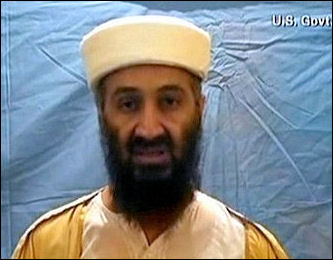
Osama bin Laden in
Pakistan compound
Finding bin Laden’s personal courier, Abu Ahmed al-Kuwaiti, is what led the United States to the compound in Abbottabad, Pakistan where bin Laden was killed. Matt Apuzzo and Adam Goldman of Associated Press wrote: “Al-Kuwaiti inadvertently led intelligence officials to bin Laden when he used a telephone in 2010 to talk with someone the U.S. had wiretapped. The CIA then tracked al-Kuwaiti back to the walled compound in a town near Islamabad. [Source: Adam Goldman and Matt Apuzzo, Associated Press, May 3, 2011]
The compound in Abbottabad was where al-Libi had once lived. The walls surrounding the property were as high as 18 feet and topped with barbed wire. Intelligence officials had known about the house for years, but they always suspected that bin Laden would be surrounded by heavily armed security guards. Nobody patrolled the compound in Abbottabad. In fact, nobody came or went. And no telephone or Internet lines ran from the compound. The CIA soon believed that bin Laden was hiding in plain sight, in a hideout especially built to go unnoticed. But since bin Laden never traveled and nobody could get onto the compound without passing through two security gates, there was no way to be sure.Despite that uncertainty, intelligence officials realized this could represent the best chance ever to get to bin Laden. They decided not to share the information with anyone, including staunch counterterrorism allies such as Britain, Canada and Australia.
“By mid-February, the officials were convinced a "high-value target" was hiding in the compound. President Barack Obama wanted to take action. "They were confident and their confidence was growing: 'This is different. This intelligence case is different. What we see in this compound is different than anything we've ever seen before,'" John Brennan, the president's top counterterrorism adviser, said Monday. "I was confident that we had the basis to take action."
“Said Brennan, "The president had to evaluate the strength of that information, and then made what I believe was one of the most gutsiest calls of any president in recent memory." Brennan told CNN Tuesday that "there was no single piece of information that was an 'ah-hah' moment." He said officials took "bits and pieces" of intelligence gathered and analyzed over a long period of time to nail down the leads they needed.
Reuters reported: In mid-March 2011 “Obama headed five National Security Council meetings on the subject. “Three days before the raid “he gave the final order to carry out the attack on a compound in what was described as an "affluent suburb" of Islamabad. "The bottom line of our collection and analysis was that we had high confidence that the compound held a high-value terrorist target," a senior official said, with a "strong probability" that it was bin Laden. "It is also noteworthy that the property is valued at approximately $1 million but has no telephone or Internet service connected to it," an administration official added. [Source: Reuters, MSNBC.com, May 2, 2011]
Polio Vaccine and Finding Osama bin Laden

aerial view Osama bin Laden compound The CIA set up a vaccine drive to obtain DNA samples from the occupants of the Abbottabad compound and use that information to determine if Osama bin Laden was there. AP reported that when a woman involved in the vaccine drive turned up at the driveway of the compund , the men at the gate took the vaccine, apparently to administer to the 23 children at the compound, and told her to go away. [Source: Matt Apuzzo and Adam Goldman, Associated Press, May 3, 2011]
Jason Ukman wrote in the Washington Post: “U.S. officials defended a tactic used by the CIA to attempt to verify the whereabouts of Osama bin Laden — the covert creation of a vaccine program in Abbottabad....The vaccine drive was conducted shortly before the raid on bin Laden’s compound, officials said, and was overseen by a Pakistani doctor who traveled to Abbottabad. The goal was to collect DNA evidence from residents to learn whether bin Laden lived in the compound. [Source: Jason Ukman, Washington Post July 13, 2011]
“A senior U.S. official said the campaign involved actual hepatitis vaccine and should not be construed as a “fake public health effort.” “People need to put this into some perspective,” said the official, speaking on the condition of anonymity because of the sensitivity of the issue. “The vaccination campaign was part of the hunt for the world’s top terrorist, and nothing else. If the United States hadn’t shown this kind of creativity, people would be scratching their heads asking why it hadn’t used all tools at its disposal to find bin Laden.” The Associated Press, meanwhile, has reported from Islamabad that Pakistani officials and international health organizations are concerned that the CIA-organized effort could harm immunization programs in the country, where public skepticism of vaccinations has long been an obstacle to the eradication of the polio.
Doctor That Helped the CIA Catch Osama bin Laden Sent to Prison for 33 Years
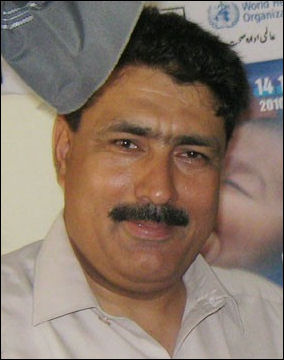
Dr. Shakil Afridi Pakistani doctor Shakil Afridi ran a vaccination program for the CIA to collect DNA and verify bin Laden's presence in the compound. Reuters reported: U.S. officials have hailed Afridi as a hero who helped the CIA track down bin Laden. Many Pakistanis were infuriated by the U.S. raid and they see Afridi as a villain who conspired against the state and brought unwanted scrutiny of Pakistan's attitude to militants. Afridi had been working with the CIA for years before the bin Laden raid, providing intelligence on militant groups in Pakistan's unruly ethnic Pashtun tribal region, said a former Pakistani security official.
In May 2012 Afridi was sentenced to 30 years in prison. Jibran Ahmad of Reuters wrote: A Pakistani doctor who helped the United States find Osama bin Laden was imprisoned for aiding militants and not for his links to the CIA, as Pakistani officials had said, according to a court document. A court in the Khyber tribal region near the Afghan border jailed Shakil Afridi for 33 years. Pakistani officials said the decision was based on treason charges for aiding the CIA in its hunt for the al Qaeda chief. But the judgment document states that Afridi was jailed because of his close ties to the banned militant group Lashkar-e-Islam, which amounts to waging war against the state. [Source: Jibran Ahmad, Reuters, May 30, 2012]
“It is unclear why Pakistani officials first said Afridi was jailed over his links to the CIA. The government may have wanted to show a largely anti-American public that Pakistan will not tolerate any cooperation with the U.S. spy agency, especially at a time of troubled relations with Washington. "There was a lot of friction because of this case with the United States. This appears to be an effort to patch things up with the United States, while also satisfying the people of Pakistan that Afridi has been punished," said Mansur Mehsud, director for research at Islamabad's FATA Research Center.
CIA Safehouse in Abbottabad
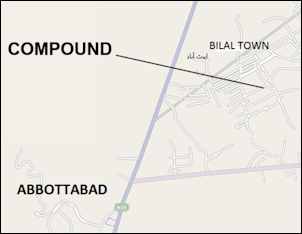
Greg Miller wrote in the Washington Post: “The CIA maintained a safe house in the Pakistani city of Abbottabad for a small team of spies who conducted extensive surveillance over a period of months on the compound where Osama bin Laden was killed, U.S. officials said. The secret CIA facility was used as a base of operations for one of the most delicate human intelligence gathering missions in recent CIA history, one that relied on Pakistani informants and other sources to help assemble a “pattern of life” portrait of the occupants and daily activities at the fortified compound where bin Laden was found, the officials said. [Source: Greg Miller, Washington Post , May 17, 2011]
“The on-the-ground surveillance work was part of an intelligence-gathering push mobilized after the discovery of the suspicious complex in August that involved virtually every category of collection in the U.S. arsenal, ranging from satellite imagery to eavesdropping efforts aimed at recording voices inside the compound. The effort was so extensive and costly that the CIA went to Congress in December to secure authority to reallocate tens of millions of dollars within assorted agency budgets to fund it, U.S. officials said. Despite what officials described as an extraordinarily concentrated collection effort leading up to the operation, no U.S. spy agency was ever able to capture a photograph of bin Laden at the compound before the raid or a recording of the voice of the mysterious male figure whose family occupied the structure’s top two floors.
“The CIA took advantage of that atmosphere to send case officers and recruited informants into Abbottabad undetected, and set up a safe house that functioned as its base. “That is an Achilles heel for bin Laden, because anybody can go” to Abbottabad, the former CIA official said. “It makes it easier for the CIA to operate.” The conspicuous nature of the complex sent up alarms that it might have been built for bin Laden himself. “The place was three stories high, and you could watch it from a variety of angles,” the former official said. Moving into the custom-made compound, the former official said, “was his biggest mistake.” U.S. officials declined to say how many case officers or informants used the facility, but they stressed that the effort required extraordinary caution because of the fear that bin Laden and those sheltering him might vanish again if spooked.
CIA Used Stealth Drones to Monitor bin Laden House
Greg Miller wrote in the Washington Post: “The CIA employed sophisticated new stealth drone aircraft to fly dozens of secret missions deep into Pakistani airspace and monitor the compound where Osama bin Laden was killed. Using unmanned planes designed to evade radar detection and operate at high altitudes, the agency conducted clandestine flights over the compound for months before the May 2 assault in an effort to capture high-resolution video that satellites could not provide. The aircraft allowed the CIA to glide undetected beyond the boundaries that Pakistan has long imposed on other U.S. drones, including the Predators and Reapers that routinely carry out strikes against militants near the border with Afghanistan. [Source: Greg Miller, Washington Post , May 17, 2011]
“The agency turned to the new stealth aircraft “because they needed to see more about what was going on” than other surveillance platforms allowed, said a former U.S. official familiar with the details of the operation. “It’s not like you can just park a Predator overhead — the Pakistanis would know,” added the former official, who, like others interviewed, spoke on the condition of anonymity, citing the sensitivity of the program.The monitoring effort also involved satellites, eavesdropping equipment and CIA operatives based at a safe house in Abbottabad.
“The new drones represent a major advance in the capabilities of remotely piloted planes, which have been the signature American weapon against terrorist groups since the attacks of Sept. 11, 2001. In 2009, the Air Force acknowledged the existence of a stealth drone, a Lockheed Martin model known as the RQ-170 Sentinel, two years after it was spotted at an airfield in Kandahar, Afghanistan. The aircraft bears the distinct, bat-winged shape of larger stealth warplanes. The operational use of the drones has never been described by official sources.
“The use of one of the aircraft on the night of the raid was reported by the National Journal’s Marc Ambinder, who said in a tweet May 2 that an “RQ-170 drone [was] overhead.” The extensive aerial surveillance after the compound was identified in August helps explain why the CIA went to Congress late last year, seeking permission to transfer tens of millions of dollars within agency budgets to fund intelligence-gathering efforts focused on the complex.
“The CIA never obtained a photograph of bin Laden at the compound or other direct confirmation of his presence before the assault, but the agency concluded after months of watching the complex that the figure frequently seen pacing back and forth was probably the al-Qaeda chief. “It’s a difficult challenge trying to secure information about any area or object of interest that is in a location where access is denied,” said retired Air Force Lt. Gen. David Deptula, who served as head of intelligence and surveillance for that service. The challenge is multiplied, he said, when the surveillance needs to be continuous, which “makes non-stealthy slow-speed aircraft easier to detect.”

Osama bin Laden’s Pakistan Compound
Satellites can typically provide snapshots of fixed locations every 90 minutes. “Geosynchronous” satellites can keep pace with the Earth’s rotation and train their lenses on a fixed site, but they orbit at 22,500 miles up. By contrast, drones fly at altitudes between 15,000 and 50,000 feet. In a fact sheet released by the Air Force, the RQ-170 is described as a “low observable unmanned aircraft system,” meaning that it was designed to hide the signatures that make ordinary aircraft detectable by radar and other means. The sheet provides no other technical details. Stealth aircraft typically use a range of radar-defeating technologies. Their undersides are covered with materials designed to absorb sound waves rather than bouncing them back at sensors on the ground. Their engines are shielded and their exhaust diverted upward to avoid heat trails visible to infrared sensors.
“U.S. officials said the drones wouldn’t have needed to be directly over the target to capture high-resolution video, because they are equipped with cameras that can gaze at steep angles in all directions. “It’s all geometry and slant ranges,” said a former senior defense intelligence official.Still, the missions were regarded as particularly risky because, if detected, they might have called Pakistani attention to U.S. interest in the bin Laden compound. “Bin Laden was in the heart of Pakistan and very near several of the nuclear weapons production sites,” including two prominent complexes southeast of Islamabad, said David Albright, a nuclear weapons proliferation expert at the Institute for Science and International Security.To protect such sites, Pakistan’s military has invested heavily in sophisticated radar and other aircraft-detection systems. “They have traditionally worried most about penetration from India, but also the United States,” Albright said.
See Separate Articles OSAMA BIN LADEN IN ABBOTTABAD AFTER SEPTEMBER 11TH factsanddetails.com; DEATH OF OSAMA BIN LADEN factsanddetails.com
Image Sources: Wikimedia Commons
Text Sources: New York Times, Washington Post, Los Angeles Times, Times of London, The Guardian, National Geographic, The New Yorker, Time, Newsweek, Reuters, AP, AFP, Wall Street Journal, The Atlantic Monthly, The Economist, Global Viewpoint (Christian Science Monitor), Foreign Policy, Wikipedia, BBC, CNN, NBC News, Fox News and various books and other publications.
Last updated July 2012
